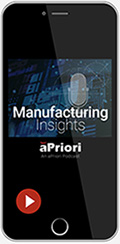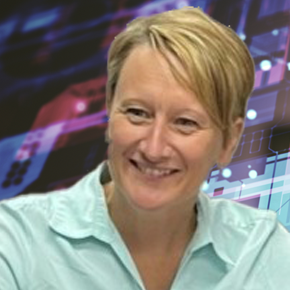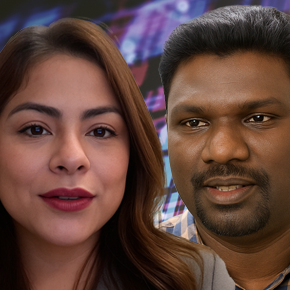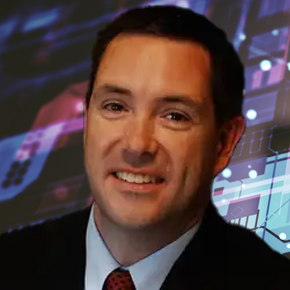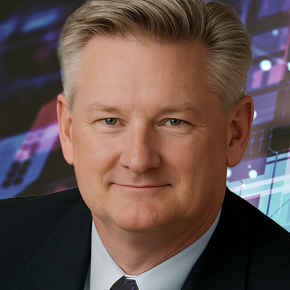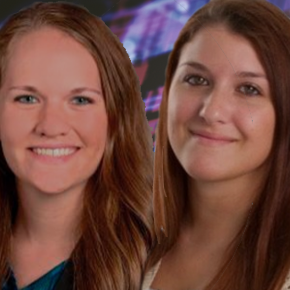November 21, 2022
Tech Solutions for Chief Sustainability Officers
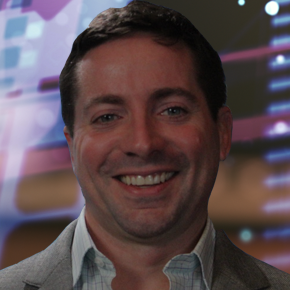
Transcript
If you are a Chief Sustainability Officer, you need all the help you can get when it comes to data. In many companies, the role of the Chief Sustainability Officer includes tracking products’ CO2 and coming up with ways to improve them, all the while without having a lot of resources at your disposal. The good news is that digital transformation promises to give Chief Sustainability Officers a leg up in their efforts to understand and control the carbon footprint of their products. My guest today, Bob Tanguay, has helped many organizations understand their sustainability posture and find ways to improve it. He worked as a consultant for the Green Business Bureau, and today he is the regional director for digital manufacturing simulation at aPriori. He’s here to talk to us today about the tech solutions that can help Chief Sustainability Officers track, improve, and make a measurable impact in CO2. Bob Tanguay, welcome to the podcast.
Bob Tanguay: Thank you, Leah. Happy to be here.
What Do Chief Sustainability Officers Do?
Leah Archibald: What is the main challenge that Chief Sustainability Officers are looking to solve with technology?
Bob Tanguay: A Chief Sustainability Officer is responsible for a company’s sustainability goals, and the steps necessary to achieve success. The main challenge is in the execution phase. In terms of setting goals, and objectives, and having a vision for sustainability – in my opinion, that’s the easy part. The hard part is executing on the potential improvements across the entire organization.
Let’s say you identified an area of improvement on your factory floor. You need to schedule that well in advance around downtime that the organization has. There are a ton of people you’ve got to talk to, work with, and plan with in advance. There’s a lot to do just in that one example alone.
Leah Archibald: And that’s just if there’s one process that you’ve decided is consuming a lot of CO2. Even that is a lot of paperwork and people management, just to get that one thing changed.
Bob Tanguay: Absolutely. So you got to be very good at politicking within your organization. I’d say you have to have a lot of touch in a lot of different areas in order to be successful. The most successful CSOs will look to tie their initiatives to a business case first. Can the impact of the change I’m looking to make affect the profitability of the company? Can you transition to clean energy and reduce your electricity bill? Based on what you’re potentially transitioning to, you could be looking at millions of dollars in savings in that one change alone. I think that the most successful CSOs, at least initially, look to tie any type of improvements around sustainability to a measurable objective that the c-suite has.
You see different things on company websites and annual reports. Some say, “We have a plan to get to net neutral by 2050, 2040, 2030,” but they aren’t detailed about incremental steps. Other organizations will be say, “We reduced our carbon footprint by X, we’re going to do it by X next quarter,” and they’re very detail-oriented.
How Do Chief Sustainability Officers Track Improvement?
Leah Archibald: Let’s talk about how CSOs track key metrics. You say some companies are tracking and some companies are not tracking. For those companies who are actually tracking real measurable sustainability targets against what they are doing today, what kind of technology solutions are they currently using?
Bob Tanguay: You can find any number of different carbon calculators out there. There are technologies within different market verticals that help with carbon calculation. You start with assessment tools – basically carbon calculators. Over time as you get more mature in your measurement, you’re going to be able to uncover more opportunities for measurement.
Leah Archibald: I think the challenge with carbon calculators is that they’re somewhat backward-looking. You have your product already made, you have your processes already in place, and then afterward you’re calculating how much carbon that takes. But it seems to me that you need more of a robust tool if you want to be forward-thinking, i.e. “How are the products or processes that I want to create in the future going to impact my CO2 footprint?”
Bob Tanguay: Absolutely. In my opinion, you need to be solving these problems when they’re still in their digital formation stage. If you’re coming to market with a new product, it’s critical to make these decisions as early as possible in the design stage. Because what happens if you miss out on that moment, if you don’t calculate your sustainability impact for that design, you are going to get locked into a bad decision for the next 10 to 20 years. Because once it leaves the factory floor, in most market verticals, you’re locked into that and that’s not coming back. Especially if you’re in a regulated market. Try making a material change in a product you developed two years ago that’s in use, and it’s going to be in use with the customer for the next 10 to 20 years. And by the way, you’re servicing that product.
So, there could be a lot of gating factors that prevent you from going back to something later and doing a better job with it. It may be too late. For that reason, aPriori’s platform ties in really well with what folks are doing in early design. Making trade-off comparisons, evaluating supplier capabilities, deciding did I get the best possible material – there are so many things that can be addressed through those different stage gates as a product comes to market that lend themselves to adding sustainability into the equation. If you can calculate your carbon footprint based on the future products that you’re going to bring to market and all the bad surprises you can eliminate, if I was a Chief Sustainability Officer, I would want to report on that, measure that, and track that.
How Does Sustainability Software Work?
Leah Archibald: Lead me through a scenario where a Chief Sustainability Officer has a robust tool. They’re working with aPriori and their design engineers have aPriori. How does that work with the trade-offs that you mentioned before? How can they both be collaborating to reduce cost and to improve manufacturability at the same time?
Bob Tanguay: With a software tool like aPriori, the Sustainability Officer can step out of their function and look at it from the design and cost perspective. They should be in those discussions around not just sustainability, but the market assessment for this product. They’re going to be talking to finance folks, and someone from quality, and someone from sourcing. Be a part of those meetings to agree on the design options. What are the cost insights for those potential design options? Can we make it at the price point we need to serve the market? You start there, and then the sustainability piece comes in, which is: what are the other options or trade-offs available for things like material? The nice thing about aPriori is it’s going to show you all the manufacturing process options available to you down to the machine level and cycle times. So you can answer questions like: Is it feasible to increase our batch sizes a little bit? Maybe we inventory a little bit more product, but we’re making it on a better class of machine that uses less energy. With a software solution, you can start to make side-by-side comparisons from a sustainability perspective.
Leah Archibald: I started off this conversation by wondering: what are the tech solutions out there for Chief Sustainability Officers to do their job? Now I’m thinking the tech solution for sustainability is not just the software, which is very necessary to the process, but also the human infrastructure of your design engineering team. It’s the whole apparatus of your people working together that actually is the solution to the sustainability problem. Software that can get everybody on the same page looking at the same models really allows you to leverage the technology available within all the human intelligence in your enterprise.
Bob Tanguay: Absolutely. It’s collaboration. Everybody has a seat at the table, and everybody’s opinion needs to be respected. But the best way to do that is through a data-driven discussion. People want facts and figures. They want details. So, provide the metrics that show not only how this is going to be better for the environment, but how this is really going to be better for the bottom line of the company.
Leah Archibald: Bob Tanguay, thank you so much. It’s been a pleasure speaking with you today.
Bob Tanguay: Thank you so much.


